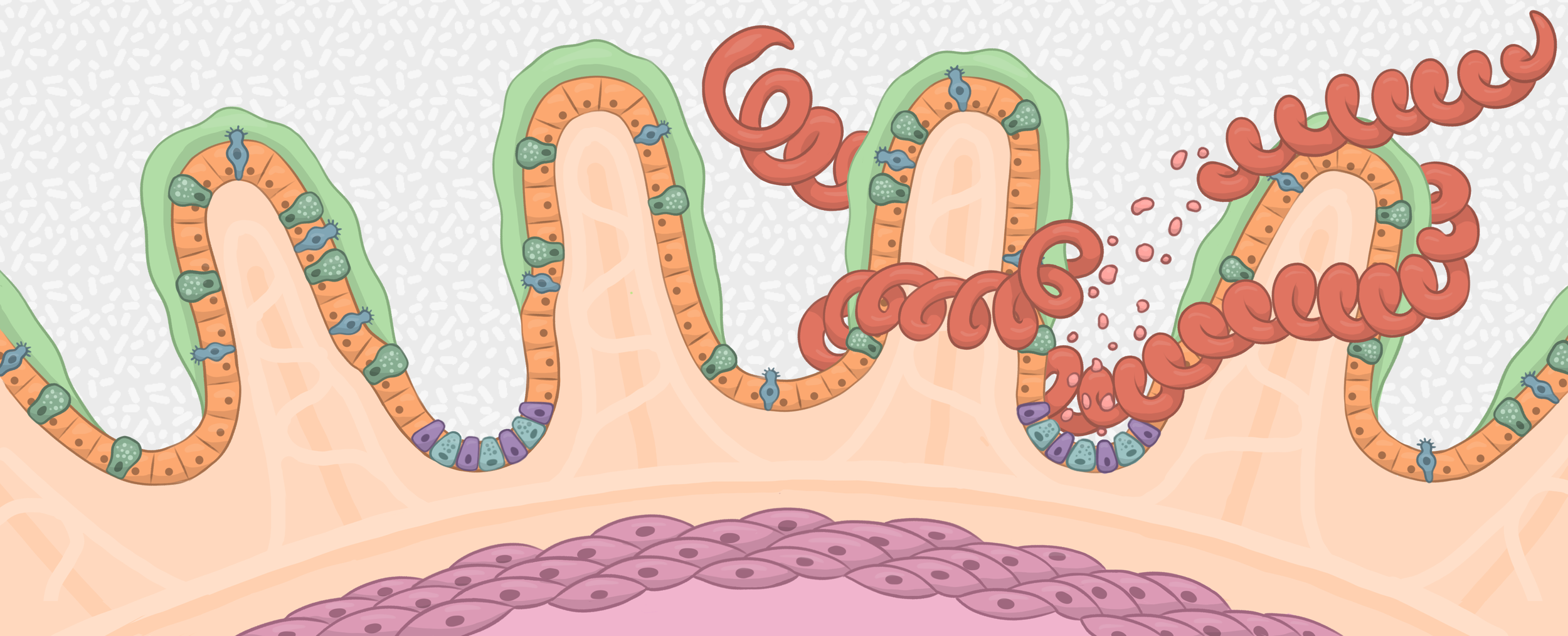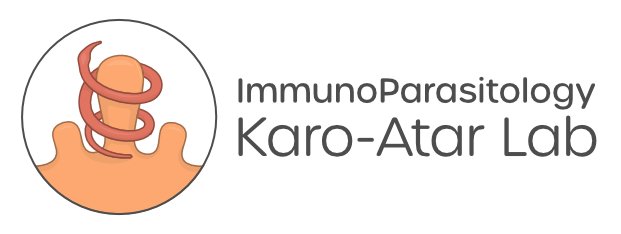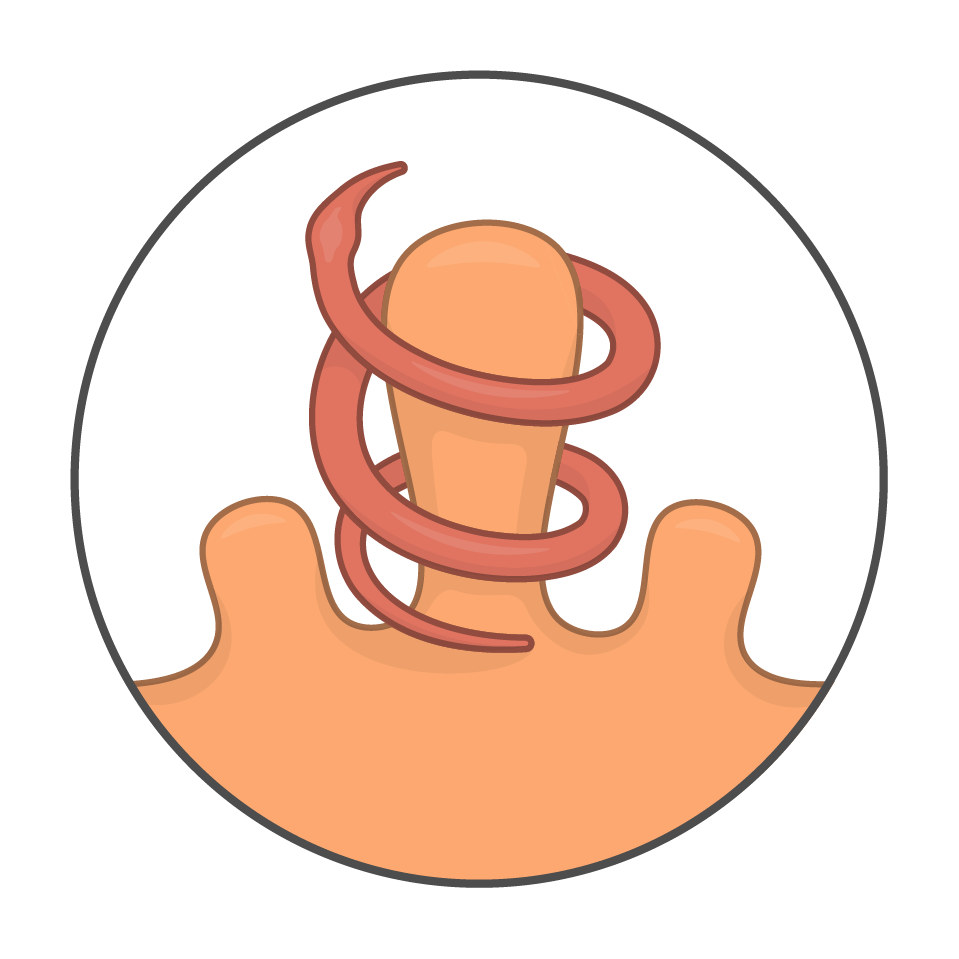
The intestinal epithelium lays at the nexus of host-pathogen interactions and functions as a physical barrier as well as a sentinel innate immune tissue with the ability to sense and respond to infectious agents. This functional diversity is achieved by the complexity of the epithelium, comprised of unique cell lineages that are continually replenished by intestinal stem cells (ISCs) residing at the crypt base.
Intestinal parasitic worms (helminths) are a unique example of highly invasive yet truly tolerable parasites that remain pervasive throughout the animal kingdom by manipulating host defense pathways to prioritize tissue adaptation and repair over parasite expulsion. This host defense strategy begins at the gut epithelium and is reciprocally regulated by helminths themselves.
Our lab studies the interaction between helminths and the host epithelium applying cutting-edge 3D organoid cultures, imaging, transcriptomics and in vivo genetic model approaches. Our goal is to explore the exciting concept that helminths directly target the epithelium to promote tissue integrity and maintain barrier formation.

